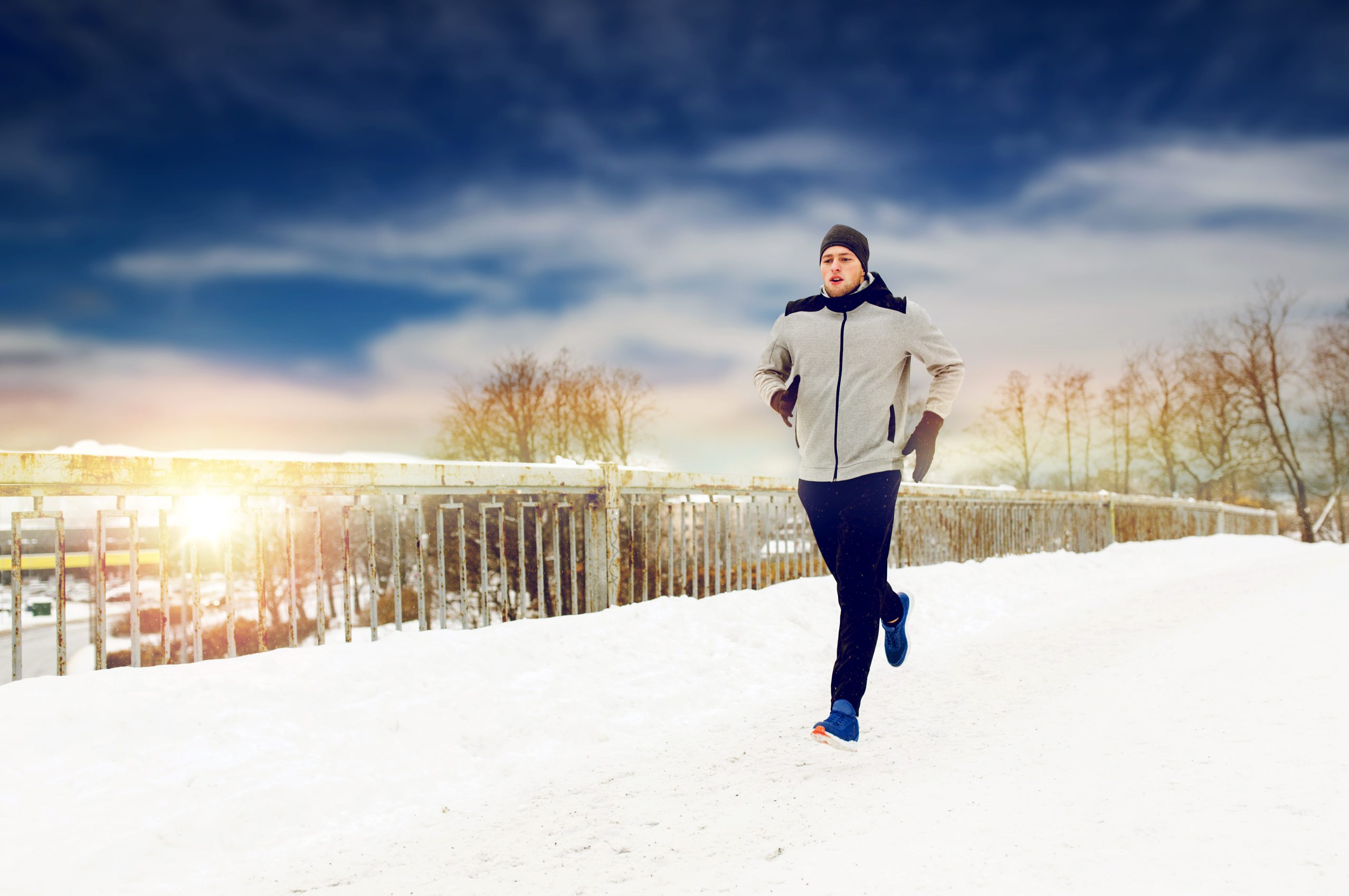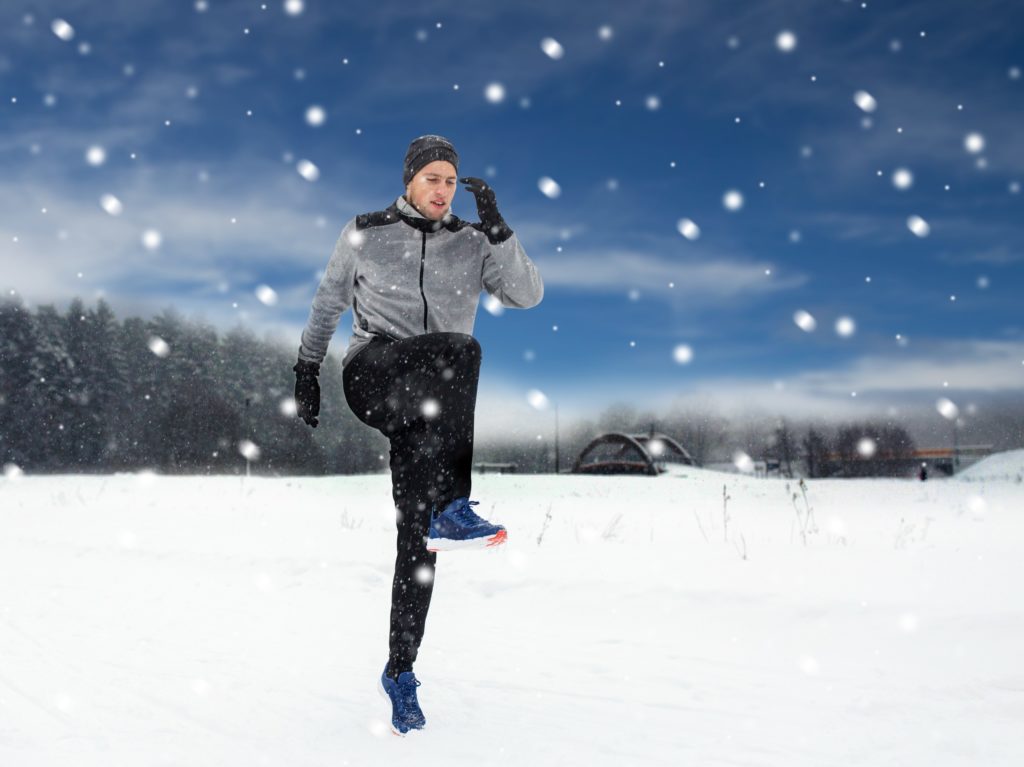Sport in cold temperatures – you should consider this

Depending on where you live, it can be quite cold in winter now. But that is no reason not to do outdoor sports. However, there are a few things to consider, because sport in cold temperatures has numerous effects on the body and performance. Read on…
Temperature differences of 40 degrees
Man is a so-called homeothermic species. This includes all living creatures on this planet that have to maintain body temperature as constant as possible. In the ideal case, this is 36.5 degrees. Certain regulatory mechanisms in the body ensure that the core temperature of the body remains as constant as possible with changing ambient temperatures. However, our skin and our limbs behave warm and change. They adapt to the ambient temperature. If it is cold, there is a temperature gradient from inside to outside – and this can be differences of more than 40 degrees. In order to keep the body temperature constant, heat production and heat absorption must, therefore, remain constant with heat dissipation.
This happens during sport in cold temperatures
- The blood vessels constrict and the blood flow decreases. As a result, the body gives off less heat through the skin.
- The body increases the basic tension of the muscles and thus creates additional warmth. The external sign of this is trembling. This cold shivering ensures that up to 80 percent of the energy is released as heat.
The temperature increases even when it is very cold
Climate and ambient temperatures, therefore, play an important role in sport. And depending on the sport, there are good and less good conditions. For example, 25 degrees is ideal for sports activities where coordination, strength or speed play a role. Long-distance runners and marathon runners, on the other hand, like it much cooler. The best performances can be expected at ten to 15 degrees. Amazingly enough, even in very cold weather, the body’s heat production is still higher than its removal. During intensive cross-country skiing in the icy cold, the body core temperature nevertheless rises to 40 degrees.

Cold and the effects on training
- The skin, tendons, connective tissue, and joint capsule are significantly less supplied with blood. As a result, they remain stiff and less elastic for longer. This considerably increases the risk of injury.
- This is especially true when it is not only cold but also when an icy wind is blowing. This not only cools down the body faster but breathing in the cold air through the open mouth can also put a strain on the respiratory tract.
- Nasal breathing would be an advantage here, at least as long as it is possible. Unfortunately, nasal breathing is no longer possible during more intensive training.
- At temperatures below zero, it is advisable to move intensive training forms such as speed training, tempo runs and interval training indoors. If this is not possible, you should put more emphasis on muscle building. This can be done at home or in the gym.
- When running, it is advisable to put a lot of emphasis on improving basic endurance. As soon as it is warmer again, you can increase the intensity.
- A good and sufficiently long warm-up program is also very important.
- Extra tip in case it snows: Running in the snow not only trains endurance, but also coordination and strength. Especially if you also run off the beaten track. But it is also much more strenuous. That is what you have to keep in mind then.

The clothes must be right
Of course, all the tips are given so far only work if the clothing is right. In the meantime, this is no longer a problem. Only 25 years ago cotton was the most commonly used material. The decisive disadvantage of this natural product: it absorbs moisture by soaking up the fibers. This increases the volume by more than 40 percent. The body is always surrounded by a layer of moisture and a temperature-regulating exchange of air is impossible. A situation that only improved in 1987 when the industry introduced the so-called layer principle. Materials such as GoreTex, Sympatex, and Nextex were for the first time able to conduct perspiration away from the body into the next layers of clothing. Everything can then escape to the outside via the last layer.
Experts recommend the three-layer system
- The first layer is tight-fitting underwear. When it is very cold even with long arms and legs. It conducts the moisture quickly and effectively away from the skin and thus prevents it from cooling down.
- The second layer is the actual sportswear. It should also still fit snugly and is mainly used for thermal protection.
- The third, also breathable layer is usually a jacket made of GoreTex or Softshell. Dark colors are an advantage. They absorb warmth better when the sun is shining. The jacket should be worn loosely, as the air is a good heat insulator. Since it gets dark early in winter, it is worth buying clothes with reflectors.
Your head gives off a lot of heat
Gloves, hats, and headbands are also important when it is freezing cold. Why? Because almost 40 percent of body heat is released through the head and neck. Runners also benefit from running shoes with a firm, grippy sole and thicker socks.